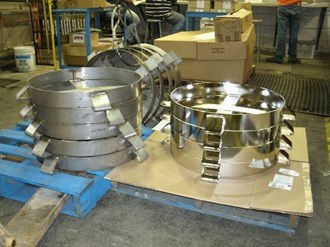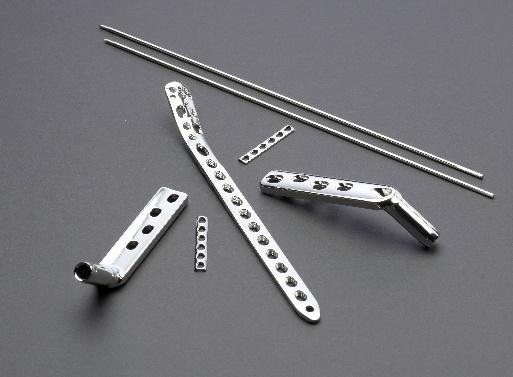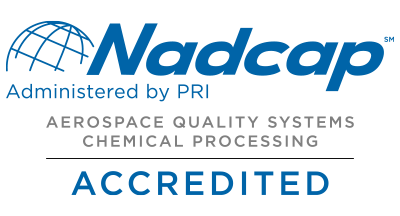Electropolishing is an electrochemical process wherein a part is immersed in a suitable electrolyte with an electrical current applied to remove or blend in microscopic imperfections on the surface. In general, it reduces surface roughness by leveling peaks and valleys improving the overall appearance. As it does preferentially go after peaks, it is sometimes used simply to remove micro-burrs and is thus referred to as electro-deburring. Similarly, when referring to electropolishing of stainless steel, it also removes any residual, embedded steel from the manufacturing process so in essence is an electro-passivation process.
While electropolishing can be done on a wide variety of substrate materials, the vast majority of electropolishing is done on stainless steel. Anoplate’s capability for electropolishing is limited to stainless steel and certain nickel alloys. For stainless steel and nickel, we utilize a concentrated sulfuric/phosphoric acid bath with nearly no water. A rectifier capable of delivering 18-24 volts and 100-400 amps/square foot is needed. The acid is heated to 130 -170 degrees F and due to the energy input, refrigeration is needed to avoid high-temperature dulling or burning. These baths are extremely viscous and heavy, typical specific gravity of 1.7 or better, so thorough rinsing afterward is critical. The bottom line, electropolishing isn’t for the faint of heart.
 |
While the process may seem ominous, the results are astonishing. The picture to the left shows the before and after of some stainless steel weldments. Not only does the process bring a brilliant luster to the part but the heat effect weld scale is readily removed as well. |
|
So what are some typical applications that require electropolish:
|
 |
--
Electropolishing, Electrochemical process, Surface imperfections, Surface roughness, Micro-burrs, Stainless steel, Electro-passivation, Surface quality, Surface appearance, Leveling peaks and valleys, Electropolishing, surface finishing, metal surface treatment, corrosion resistance, metal polishing, stainless steel polishing, surface enhancement, metal surface aesthetics, electropolishing process, surface smoothness













